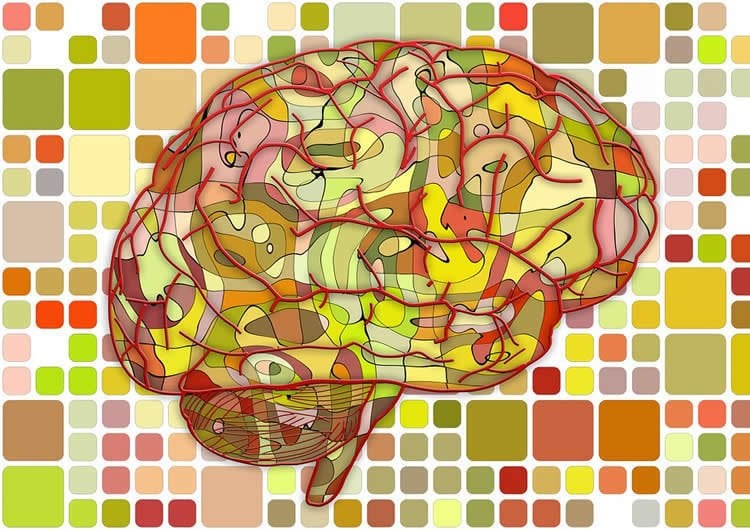Summary: Inhibitory neurons form neural networks that become broader as they mature, a new study reports.
Source: Baylor College of Medicine.
Scientists have discovered that networks of inhibitory brain cells or neurons develop through a mechanism opposite to the one followed by excitatory networks. Excitatory neurons sculpt and refine maps of the external world throughout development and experience, while inhibitory neurons form maps that become broader with maturation. This discovery adds a new piece to the puzzle of how the brain organizes and processes information. Knowing how the normal brain works is an important step toward understanding the nature of neurological conditions and opens the possibility of finding treatments in the future. The results appear in Nature Neuroscience.
“The brain represents the external world as specific maps of activity created by networks of neurons,” said senior author Dr. Benjamin Arenkiel, associate professor of molecular and human genetics and of neuroscience at Baylor College of Medicine, who studies neural maps in the olfactory system of the laboratory mouse. “Most of these maps have been studied in the excitatory circuits of the brain because excitatory neurons in the cortex outnumber inhibitory neurons.”
The studies of excitatory maps have revealed that they begin as a diffuse and overlapping network of cells. “With time,” said Arenkiel, “experience sculpts this diffuse pattern of activity into better defined areas, such that individual mouse whiskers, for instance, are represented by discrete segments of the brain cortex. This progression from a diffuse to a refined pattern occurs in many areas of the brain.”
In addition to excitatory networks, the brain has inhibitory networks that also respond to external stimuli and regulate the activity of neural networks. How the inhibitory networks develop, however, has remained a mystery.
In this study, Arenkiel and colleagues studied the development of maps of inhibitory neurons in the olfactory system of the mouse.
Studying inhibitory brain networks of the mouse sense of smell
“Unlike sight, hearing or other senses, the sense of smell in the mouse detects discrete scents from a large array of molecules,” said Arenkiel, who is also a McNair Scholar at Baylor.
Mice can detect a vast number of scents thanks in part to a complex network of inhibitory neurons. Inhibitory neurons are the most abundant type of cells in the mouse brain area dedicated to process scent. To support this network, newly born inhibitory neurons are continually added and integrated into the circuits.

Arenkiel and colleagues followed the paths of these newly added neurons in time to determine how inhibitory circuits develop. First, they genetically labeled the cells so they would glow when the neurons were active. Then, they offered individual scents to the mice and visually recorded through a microscope the areas or networks of the brain that glowed for each scent the live, anesthetized animal smelled. The scientists repeated the experiment several times to determine how the networks changed as the animal learned to identify each scent.
Surprising result
The scientists expected that inhibitory networks would mature in a way similar to that of excitatory networks. That is, the more the animal experienced a scent, the better defined the networks of activity would become. Surprisingly, the scientists discovered that the inhibitory brain circuits of the mouse sense of smell develop in a manner opposite to the excitatory circuits. Instead of becoming narrowly defined areas, the inhibitory circuits become broader. Thanks to this new finding scientists now better understand how the brain organizes and processes information.
Arenkiel and colleagues think that the inhibitory networks work hand-in-hand with the excitatory networks. They propose that the interaction between excitatory and inhibitory networks could be compared to a network of roads (excitatory networks) whose traffic is regulated by a network of traffic lights (inhibitory networks). The scientists suggest that the formation of useful neural maps depends on inhibitory networks driving the refinement of excitatory networks, and that this new information will be essential towards developing new approaches for repairing brain tissue.
Other contributors to this work include Kathleen B Quast, Kevin Ung, Emmanouil Froudarakis, Longwen Huang, Isabella Herman, Angela P Addison, Joshua Ortiz-Guzmán, Keith Cordiner, Peter Saggau and Andreas S Tolias. The authors are affiliated with one or more of the following institutions: Baylor College of Medicine, University of St. Thomas, Allen Institute of Brain Science, Rice University and Texas Children’s Hospital.
Funding: Financial support was provided by the McNair Medical Institute, the Charif Souki Fund, IRACDA Fellowship K12GM084897, NRSA F31NS089178, NINDS grant
F31NS081805, NINDS R01NS078294, U54HD083092 to the BCM IDDRC and the Intelligence Advanced Research Projects Activity (IARPA) via Department of Interior/Interior Business Center (DoI/IBC) contract number D16PC00003.
Source: Dipali Pathak – Baylor College of Medicine
Image Source: NeuroscienceNews.com image is in the public domain.
Original Research: Abstract for “Developmental broadening of inhibitory sensory maps” by Kathleen B Quast, Kevin Ung, Emmanouil Froudarakis, Longwen Huang, Isabella Herman, Angela P Addison, Joshua Ortiz-Guzman, Keith Cordiner, Peter Saggau, Andreas S Tolias & Benjamin R Arenkiel in Nature Neuroscience. Published online December 26 2016 doi:10.1038/nn.4467
[cbtabs][cbtab title=”MLA”]Baylor College of Medicine “New Mechanism of How Brain Networks Form Identified.” NeuroscienceNews. NeuroscienceNews, 26 December 2016.
<https://neurosciencenews.com/brain-network-formation-5811/>.[/cbtab][cbtab title=”APA”]Baylor College of Medicine (2016, December 26). New Mechanism of How Brain Networks Form Identified. NeuroscienceNew. Retrieved December 26, 2016 from https://neurosciencenews.com/brain-network-formation-5811/[/cbtab][cbtab title=”Chicago”]Baylor College of Medicine “New Mechanism of How Brain Networks Form Identified.” https://neurosciencenews.com/brain-network-formation-5811/ (accessed December 26, 2016).[/cbtab][/cbtabs]
Abstract
Developmental broadening of inhibitory sensory maps
Sensory maps are created by networks of neuronal responses that vary with their anatomical position, such that representations of the external world are systematically and topographically organized in the brain. Current understanding from studying excitatory maps is that maps are sculpted and refined throughout development and/or through sensory experience. Investigating the mouse olfactory bulb, where ongoing neurogenesis continually supplies new inhibitory granule cells into existing circuitry, we isolated the development of sensory maps formed by inhibitory networks. Using in vivo calcium imaging of odor responses, we compared functional responses of both maturing and established granule cells. We found that, in contrast to the refinement observed for excitatory maps, inhibitory sensory maps became broader with maturation. However, like excitatory maps, inhibitory sensory maps are sensitive to experience. These data describe the development of an inhibitory sensory map as a network, highlighting the differences from previously described excitatory maps.
“Developmental broadening of inhibitory sensory maps” by Kathleen B Quast, Kevin Ung, Emmanouil Froudarakis, Longwen Huang, Isabella Herman, Angela P Addison, Joshua Ortiz-Guzman, Keith Cordiner, Peter Saggau, Andreas S Tolias & Benjamin R Arenkiel in Nature Neuroscience. Published online December 26 2016 doi:10.1038/nn.4467






